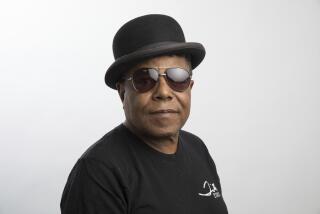New Directions for East West Players : Theater: The 28th season opens with ’29 1/2 Dreams’ as Tim Dang takes over as artistic director and the company launches a new, and more businesslike, approach.
Nobu McCarthy shakes her head as she recalls 1989, the year the roof almost fell in on East West Players, the country’s first Asian-American theater.
Mako, East West’s artistic director for its first 24 years, had just resigned in a bitter dispute with the theater’s board of directors. If any Los Angeles theater had an auteur, it was East West’s Mako--too much so, said the board, which, among other things, accused the actor-director of nepotism in casting. A few months later, McCarthy, a veteran actor on screen and on East West’s stage since 1971, was appointed to run the operation.
On her first day in the office, McCarthy says she saw “a mess. It was worse than I had been led to believe. I had to do the day-to-day running around. Everything, everything was up to me. My job was to clean out the mud and push to the future.”
Four years later, the future is now for East West. In July, McCarthy, 58, handed over the directorship to 35-year-old Tim Dang, whose interests are different from those of McCarthy and Mako. Like his predecessors, the Honolulu-born, USC-trained Dang began at East West as an actor. But as Dang displayed as director of “Canton Jazz Club” at East West in 1991, his tastes are more for musicals and experimentation than the domestic dramas East West has often been associated with.
As if to demonstrate how peaceful East West’s current sea change is, Dang and McCarthy have conceived an uncommon collaborative debut for the theater’s 28th season: “29 1/2 Dreams, Women Walking Through Walls,” opening tonight, is based on Dang and McCarthy’s joint idea for a “musical montage” by and about women. The work combines pieces by seven writers and music by four composers, performed by a cast of six, with actress-comedian Amy Hill making her directing debut.
Dang suggests that Hill’s presence marks a generational shift that he hopes will move East West from its current course, which critics have generally felt to be uneven, to a new, firmer one. The shift is obvious right in Dang’s office. As McCarthy relaxes in a sofa chair, the theater’s new leader sits behind his desk, boldly fronted with a gold nameplate that reads: Tim Dang Artistic Director.
The entire main season, including new plays by Cherylene Lee (“Arthur and Leila”) and Elizabeth Wong (“Letters From a Student Revolutionary”) and revivals of Jean Genet’s “The Maids” and Jean Cocteau’s “The Human Voice,” is focused on women. For the first time, East West will operate seven days a week with a “second season” of works playing Monday through Wednesday nights, beginning Oct. 4 with Richard Maltby Jr. and David Shire’s musical revue, “Starting Here, Starting Now.”
Private fund-raising and a mix of federal, state and local grants have provided enough cushion in the 1993-94 $350,000-budget that, Dang says, “we had no problem funding the second season. It’s all part of our direction toward a real producing organization.”
When McCarthy, who left her native Japan in 1956 to pursue a Hollywood career, took the helm of East West, she says she found that there were only “two or three active board members. You must remember that East West was built by actors. No one had any business savvy.” So, like a politician running for office, McCarthy launched a whirlwind of activity, attending early-morning breakfasts, afternoon meetings and late-night parties to network and attract business people to East West’s skeletal board. It now consists of 30 members, with corporate connections such as AT&T.;
It has also aimed for an ethnic diversity beyond the Japanese-American profile that created problems for the theater, McCarthy says. “There have been some Asian-American groups (that harbored) bitterness toward East West, that it was just a Japanese theater.” Dang adds that “whether it was Koreans, Vietnamese or Pacific Islanders, they told us that they had never seen their cultures represented on our stage. We’re walking a fine line, trying to serve a complex community and also be a vital theater. The hard trick is to bring the larger Asian-Pacific community to vital theater while attracting a larger audience to Asian-Pacific work.”
As for new writing blood, McCarthy says emphatically that East West “had not really been developing writers. We gave many a place to work, but nothing beyond that.” The theater’s 3-year-old David Henry Hwang Writers Institute, a six-month workshop of writing and staged readings, is designed to foster East West’s future playwriting pool. Beyond this, Dang has formed a musical-theater workshop and is discussing future projects with young Asian artists not previously connected with East West, such as playwright Han Ong, performance artist Dan Kwong and director-writer-actor Shishir Kurup.
East West’s new businesslike approach filled 60% of the seats; 1993 sales are expected to go higher. “Truly,” Dang says, “we’re bursting at the seams, and need to find new quarters.” The search for a new home includes Little Tokyo’s 13,000-square-foot Union Church building as well as spaces in Culver City and Glendale, but whatever is chosen must, Dang says, “be viable for our growth for at least 10 years. Our long-term plan is to be an arts center, with a gallery, bookstore and workshop space. Now that we’re organized, we need to go beyond doing plays.”
More to Read
The biggest entertainment stories
Get our big stories about Hollywood, film, television, music, arts, culture and more right in your inbox as soon as they publish.
You may occasionally receive promotional content from the Los Angeles Times.










